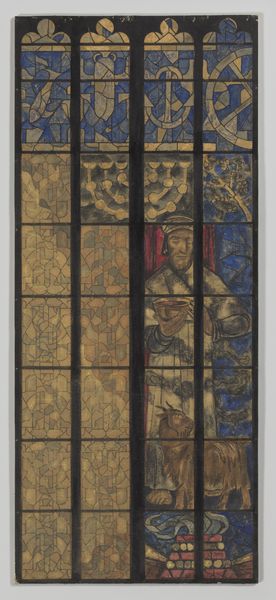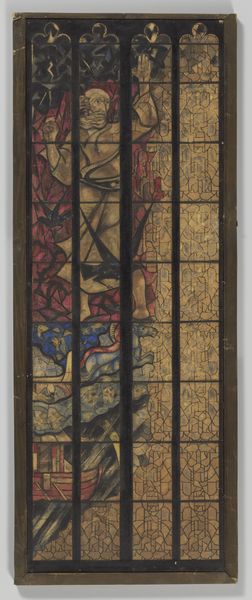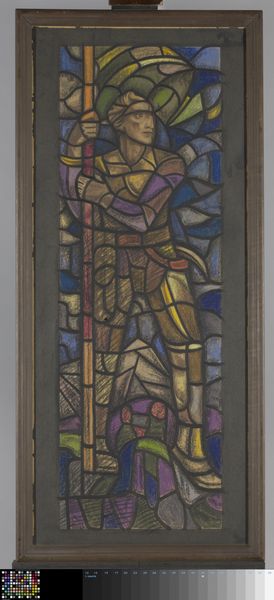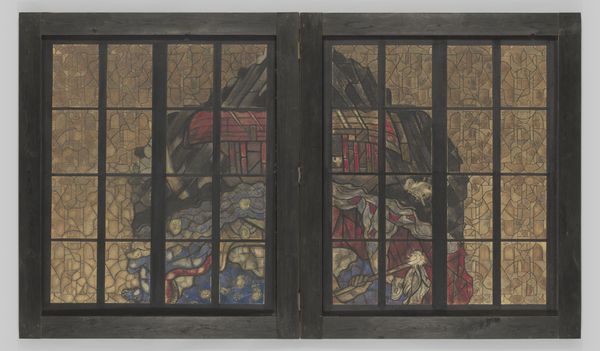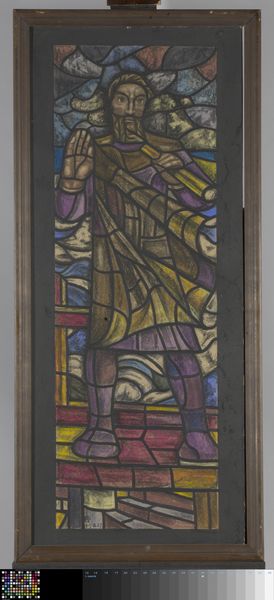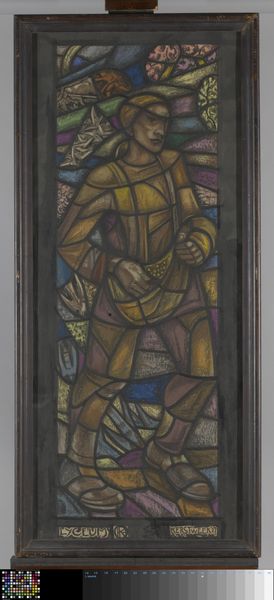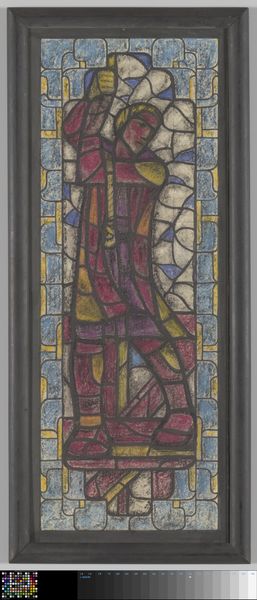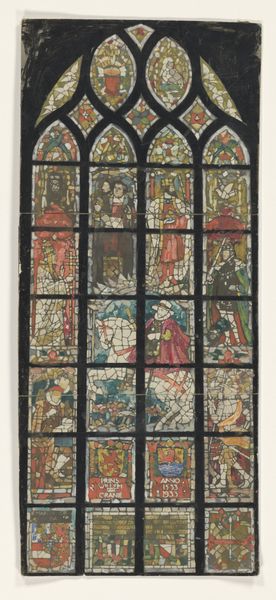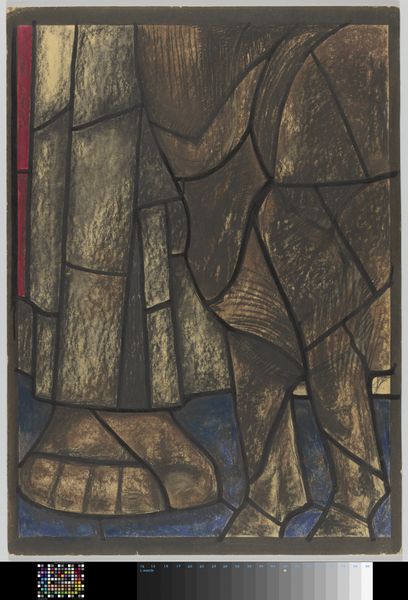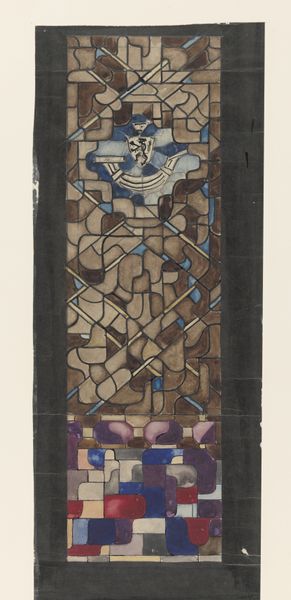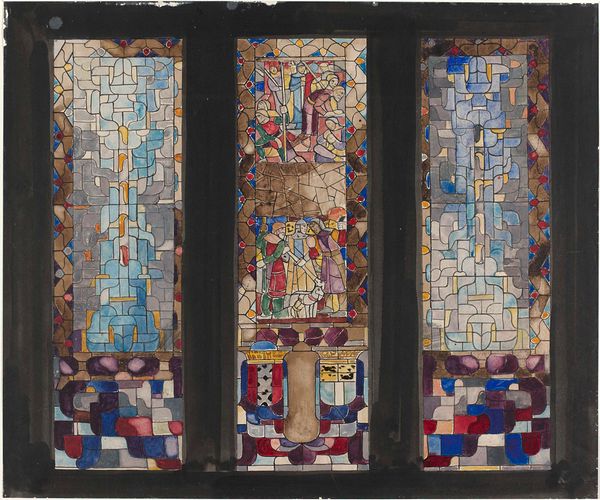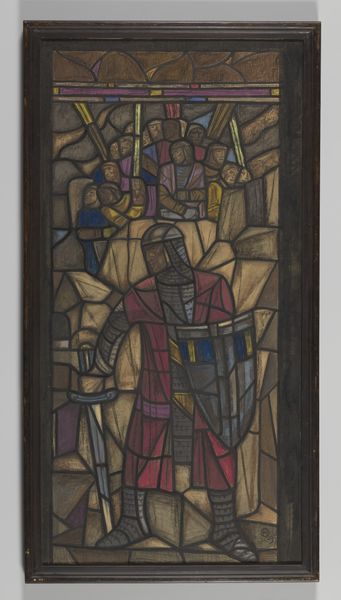
Ontwerp voor het midden gedeelte van een raam in het Noordertransept in de Dom te Utrecht 1878 - 1938
0:00
0:00
drawing, tempera, painting, paper
#
drawing
#
medieval
#
tempera
#
painting
#
sculpture
#
landscape
#
figuration
#
paper
#
stained glass
#
watercolor
Dimensions: height 1420.3 mm, width 400 mm, height 153.6 mm, width 90 mm
Copyright: Rijks Museum: Open Domain
Editor: This is "Ontwerp voor het midden gedeelte van een raam in het Noordertransept in de Dom te Utrecht" by Richard Nicolaüs Roland Holst, likely created between 1878 and 1938. It’s a tempera and watercolor drawing on paper, and it’s currently held at the Rijksmuseum. It gives off a serious, almost solemn mood. What do you make of it? Curator: Well, looking at Holst's design, particularly its intended placement within the Dom, it is important to consider its relationship to power, religion, and societal values prevalent during the late 19th and early 20th centuries, when religious institutions often served as sites for reinforcing dominant ideologies. Does the imagery, with its medieval influence, perhaps harken back to an idealized past, a strategy often employed to legitimize contemporary social structures? Editor: That's interesting. It does have a very romanticized, almost nostalgic feel, which I guess could connect to reinforcing existing power structures. The figure in the center – who do you think they represent, and how does that fit into your perspective? Curator: The figure, likely a religious figure perhaps drawn from the Old Testament, is rendered with a certain authority. His presence, juxtaposed against the backdrop of the Dom, asks us to consider the role of religious figures in shaping public morality and cultural identity, potentially reaffirming specific gendered or racialized narratives. What emotions does the figure holding the bowl elicit for you? Editor: I see what you mean. I guess I felt like it was reverential at first, but framing it in terms of power and cultural identity does make me rethink the work. Curator: Exactly. It allows us to engage with the complex interplay between art, faith, and societal norms, fostering a more nuanced understanding of both historical and contemporary implications. Editor: This was very helpful to appreciate it in a social and historical context, while it also raised questions in my mind. Curator: Likewise.
Comments
No comments
Be the first to comment and join the conversation on the ultimate creative platform.
